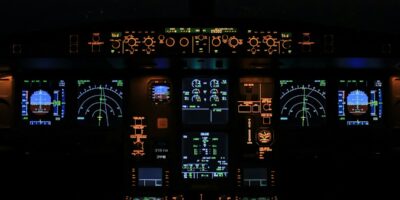Nimitz-class Aircraft Carrier News
Nimitz-class Aircraft Carrier News
The United States Navy’s Nimitz-class aircraft carriers are enduring symbols of military prowess. Introduced in 1975, they have been the backbone of the Navy’s fleet operations. These nuclear-powered vessels displace over 100,000 tons and can operate for over 20 years without refueling. Each carrier serves as the cornerstone of a strike group with unparalleled reach and capabilities.
Overview of Nimitz-class Carriers
Nimitz-class carriers are named after Fleet Admiral Chester W. Nimitz. The class consists of ten carriers, including the USS Nimitz (CVN-68) and the USS Carl Vinson (CVN-70). These carriers were designed to project air power anywhere in the world. They support a range of missions, from humanitarian assistance to combat operations.
Recent Developments
The USS Nimitz recently completed a major overhaul. This maintenance period, known as a Docking Planned Incremental Availability (DPIA), included updates to the ship’s weapons systems and communication technology. The overhaul ensures the carrier remains battle-ready for years to come.
USS Carl Vinson also made headlines with its deployment of F-35C Lightning II fighter jets. This marked the first operational deployment of the F-35C on a Nimitz-class vessel. The integration of these stealth fighters expands the carrier’s capabilities, allowing for more versatile and effective missions.
Technological Advancements
Nimitz-class carriers have seen significant technological improvements over time. Radar and communication systems have been upgraded. These enhancements improve strike precision and coordination with other naval and joint forces. Advanced Electronic Warfare (EW) systems have also been integrated to counter modern threats.
The carriers now feature updated nuclear reactors that enable longer deployments without the need for resupply. This logistical advantage is crucial for sustained operations in remote areas. Modernization efforts focus on maintaining the competitive edge of these vessels in an ever-evolving maritime environment.
Training and Crew Readiness
Ensuring the readiness of the carrier’s crew is a priority. Intensive training programs keep sailors proficient in their roles. Regular drills simulate combat scenarios and emergency situations. These exercises prepare the crew to respond effectively under pressure.
The carriers often host joint exercises with allied navies. Such collaboration enhances interoperability and strengthens international maritime partnerships. The presence of Nimitz-class carriers in joint exercises demonstrates the commitment to collective security and mutual defense.
Environmental Considerations
The Navy has made strides in reducing the environmental impact of Nimitz-class carriers. Waste management systems have been upgraded to minimize pollution. The carriers are equipped with advanced desalination plants, ensuring a sustainable freshwater supply while at sea.
Nuclear power eliminates the need for fossil fuels, reducing the carbon footprint. However, the handling and disposal of nuclear waste remain critical issues. Safety protocols ensure that nuclear materials are managed responsibly, minimizing environmental risks.
Future of Nimitz-class
As the Navy continues to modernize its fleet, discussions about the future of Nimitz-class carriers are ongoing. Some suggest shifting focus to smaller, more agile vessels. Others argue for continued investment in large carriers due to their unmatched capabilities.
The debate includes considerations of cost, technological trends, and strategic needs. Regardless of the outcome, Nimitz-class carriers have a secured legacy in naval history. They will likely remain a central element of the Navy’s power projection for years to come.
Global Impact
Nimitz-class carriers symbolize power and influence. Their global presence can shape geopolitical dynamics. Countries perceive their arrival as both a deterrent and a sign of support. This dual aspect helps in conflict prevention and crisis response.
During natural disasters, these carriers provide humanitarian aid and relief operations. Their onboard medical facilities and aircraft can reach affected regions quickly, showcasing their versatility beyond combat roles.
Challenges and Criticisms
Despite their strengths, Nimitz-class carriers face challenges. High operational costs and maintenance requirements are notable concerns. Budget constraints put pressure on ensuring continuous upgrades and crew training.
Some also question their vulnerability to modern anti-ship missiles. Advanced missile technology poses threats that require innovative defense solutions. The Navy continuously evaluates and strengthens defensive measures to address these risks.



Subscribe for Updates
Get the latest articles delivered to your inbox.
We respect your privacy. Unsubscribe anytime.